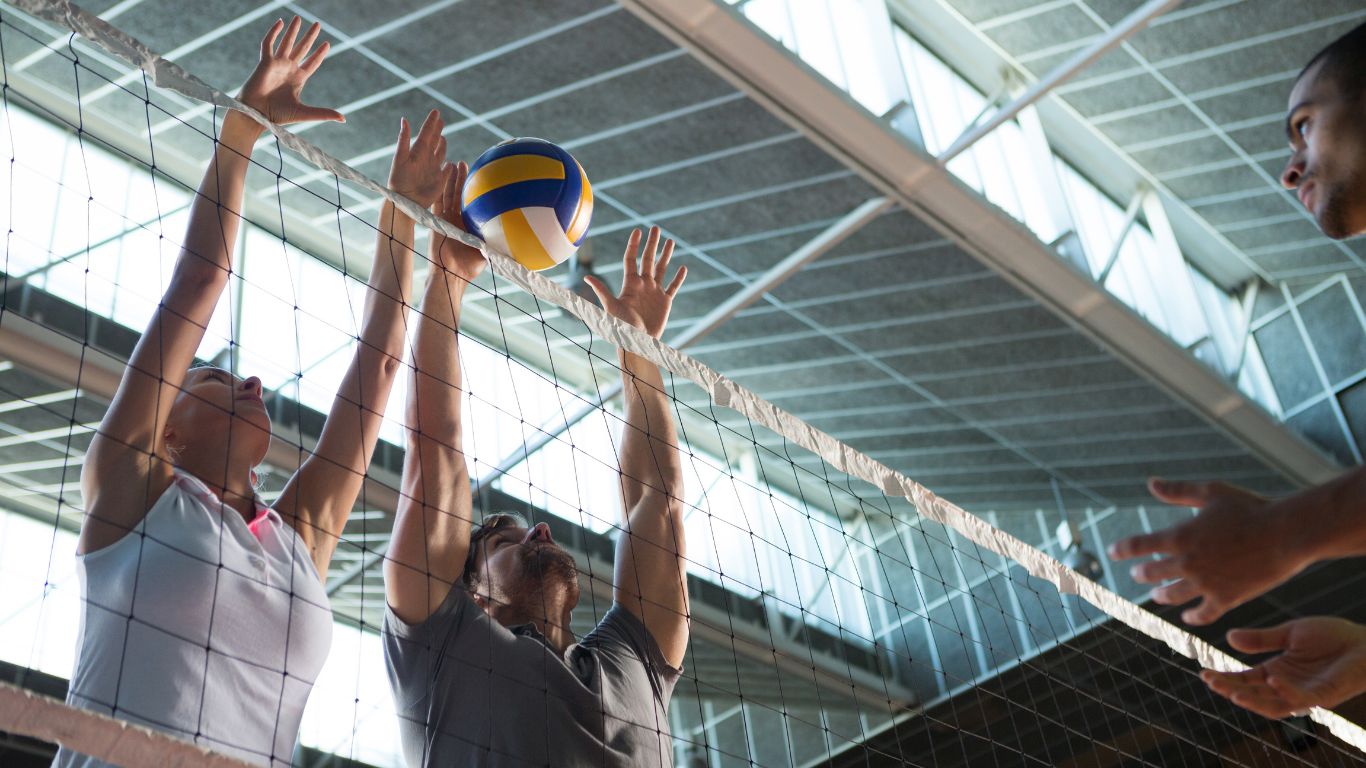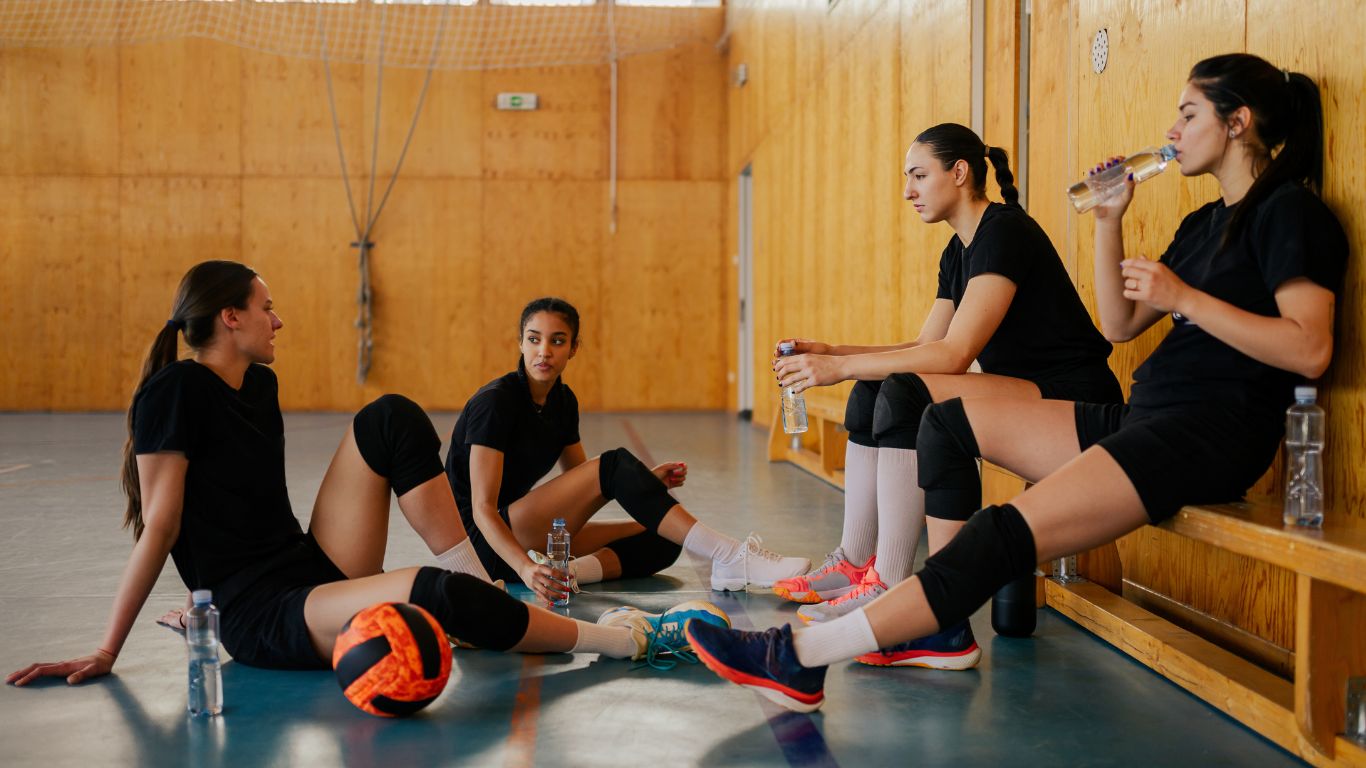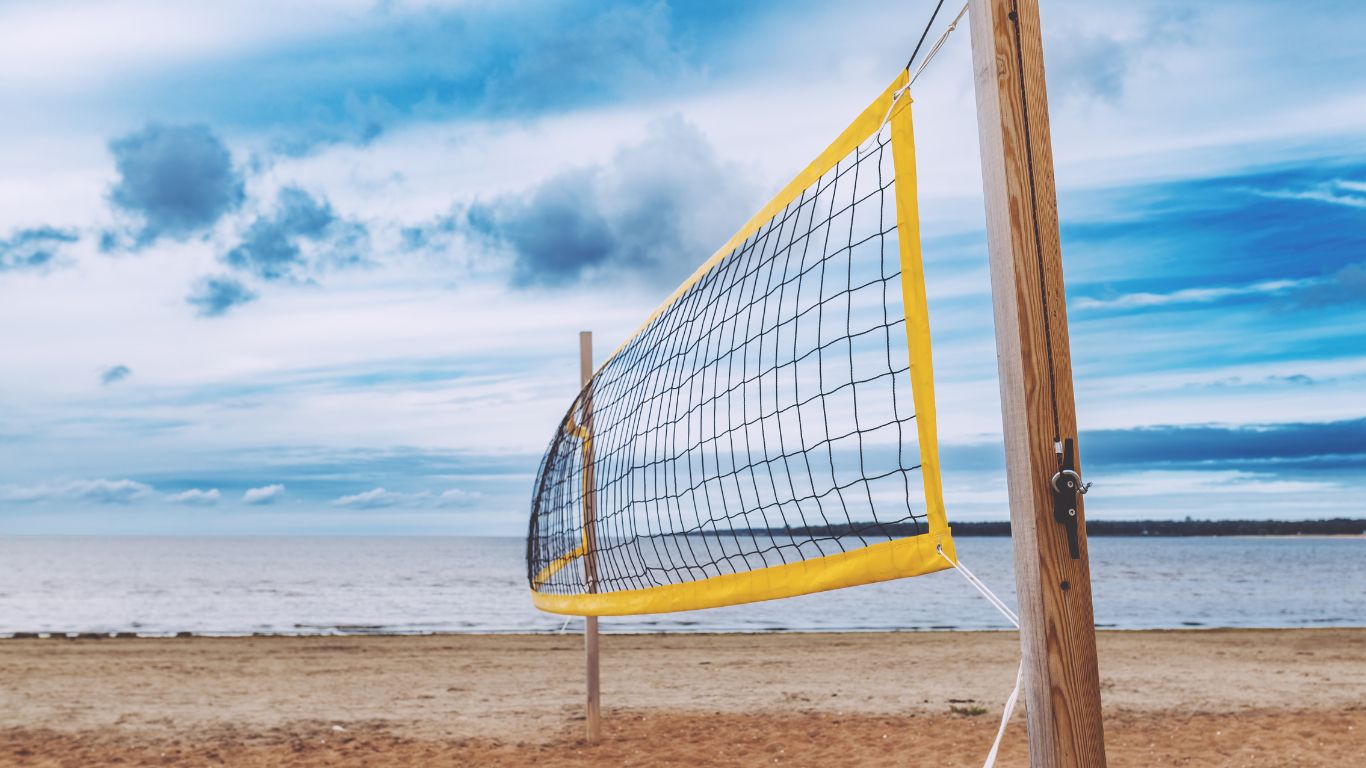Side out in volleyball refers to a team losing their serve after failing to score a point against the opposing team. In this situation, the serving team rotates, and the receiving team has the opportunity to serve.
This rule promotes fairness and equal opportunities for both teams in a match. In volleyball, side out is an important term that determines which team has the serving advantage. Understanding the meaning of side out is essential for players and spectators to follow the game.
This article explores the concept of side out in volleyball, its significance in the game, and how it affects the flow and dynamics of a match. Whether you are a beginner learning the sport or an experienced player seeking a refresher, this guide will provide a clear and concise explanation of what side out means in volleyball.
Getting To Know Volleyball
When it comes to popular team sports, volleyball definitely deserves a spot on the list. With its fast-paced gameplay and unique rules, it offers both excitement and challenge. One important term that every beginner should know in volleyball is “side out”. In this blog post, we will explore the meaning of side out in volleyball and delve into the history, basic rules, and gameplay of this engaging sport.
History Of Volleyball
Volleyball traces its roots back to the late 19th century when it was initially called “mintonette”. It was created by William G. Morgan, a YMCA physical education director, who wanted to invent a new game that combined elements of basketball, tennis, and handball. In 1896, the first official volleyball game took place, and the sport quickly gained popularity around the world.
Over time, the rules and regulations of volleyball evolved, leading to the establishment of the Fédération Internationale de Volleyball (FIVB) in 1947. Today, volleyball is played at various levels, including recreational leagues, high school and college competitions, and international tournaments like the Olympic Games.
Basic Rules And Gameplay
Now that we’ve covered the history of volleyball, let’s move on to the basic rules and gameplay. Volleyball is played on a rectangular court, divided by a net. The objective is for each team to send the ball over the net and to the opponent’s side, while preventing the ball from hitting the ground on their own side.
Here are some key rules and gameplay elements to familiarize yourself with:
- Team Composition: Each team consists of six players on the court, with specialized positions such as setter, spiker, and libero.
- Rally Scoring: In volleyball, every rally results in a point being awarded to one of the teams, regardless of the serving team. Matches are typically played until one team reaches a specified number of sets won.
- Serving: The serving team starts the rally by serving the ball over the net to the opposing team. The server must stand behind the end line and hit the ball without stepping over the line.
- Side Out: In volleyball, a side out occurs when the serving team fails to score a point or commits a fault, resulting in the opposing team earning the right to serve. It is a crucial moment where teams can gain or lose momentum.
- Rotation: Teams rotate clockwise after winning a side out, ensuring that all players have a chance to serve and play in different positions.
Volleyball is a sport that demands coordination, agility, and teamwork. It encourages fast reflexes, strategic thinking, and effective communication among teammates. Understanding the meaning of side out and the fundamental rules of volleyball is essential for enjoying and excelling in this dynamic sport.

Credit: www.latinosforeducation.org
Introduction To Side Out In Volleyball
When it comes to the game of volleyball, understanding the rules is crucial. One important term you need to know is “side out.” In this section, we will delve into the meaning and origins of the side out rule in volleyball.
Defining Side Out
Side out in volleyball refers to the moment when the serving team loses their right to serve, resulting in a change of possession. This occurs when the receiving team successfully defends against the serving team’s attack and regains control of the ball. When a side out happens, the serving team rotates one position clockwise, and a player from the new rotational position serves the ball.
A side out is a crucial event in a volleyball match as it allows both teams to have an equal opportunity to score points. The team that successfully executes a side out gains the chance to serve and attempt to earn points, while the other team must focus on their defensive strategies.
Origins Of Side Out Rule
The side out rule has been a fundamental aspect of volleyball since its inception. Introduced by William G. Morgan in 1895, volleyball was initially known as “mintonette.” However, it wasn’t until 1916, when the side out rule was added, that the game truly began to evolve.
Morgan implemented the side out rule to ensure fair play and maintain an equal balance between serving and defensive opportunities. This rule offered a chance for both teams to showcase their skill set while keeping the game competitive and exciting.
Over the years, the side out rule has remained a staple in the sport of volleyball. It has contributed to the strategic gameplay and intense rallies that make volleyball an exhilarating sport to both watch and play.
Strategic Importance Of Side Out
In volleyball, side out refers to regaining the serve after the opposing team has served and scored a point. It’s a crucial aspect of the game, as it determines which team controls the momentum and has the opportunity to score. Understanding the strategic importance of side out is essential for any volleyball player or team seeking success on the court.
Maintaining Serve Advantage
When a team successfully side outs, they immediately gain the serve, putting them in a position to score points. By maintaining the serve advantage, a team can control the flow of the game, putting pressure on their opponents and capitalizing on scoring opportunities. This strategic advantage can be pivotal in turning the tide of a match in favor of the serving team.
Pressure On The Receiving Team
Each successful side out puts pressure on the receiving team to defend against the serving team’s attack. This pressure can lead to defensive errors, allowing the serving team to capitalize on scoring opportunities. Additionally, the constant pressure of having to side out can wear down the receiving team, resulting in mental fatigue and making it easier for the serving team to maintain control of the game.

Credit: www.amazon.com
Tactics For Achieving Side Out
In volleyball, side out refers to a team successfully transitioning from the defensive to offensive position, earning the right to serve the ball. Achieving a side out is crucial for maintaining control and momentum during a match. To help your team consistently side out, it’s important to employ effective serving techniques, along with strategic setting and hitting strategies.
Effective Serving Techniques
When it comes to serving, mastering different techniques can significantly impact your team’s ability to side out successfully. Here are a few effective serving techniques to consider:
- Jump Serve: This powerful serve involves jumping before hitting the ball, allowing for extra force and speed.
- Float Serve: This serve doesn’t spin, making it difficult for the opposing team to predict its trajectory.
- Topspin Serve: By adding topspin, you can create a low trajectory, causing the ball to drop quickly over the net.
Setting And Hitting Strategies
Once the ball is in play, setting and hitting strategies play a crucial role in achieving side out. To increase your team’s chances of success, consider the following tactics:
- Quick Sets: Executing quick sets allows hitters to attack the ball at higher tempos, catching the opposition off-guard and making it more challenging for them to defend.
- Placement Hitting: Instead of always aiming for power, strategically placing hits in open areas can catch opponents off balance and increase the chances of scoring a point.
- Change of Speed: Mixing up the speed at which hits are executed can keep the opposing blockers guessing and make it harder for them to set up a solid defense.
By implementing a combination of effective serving techniques and strategic setting and hitting strategies, your team can improve its ability to side out consistently. These tactics not only enhance your chances of gaining the right to serve but can also give your team the upper hand, ultimately leading to a more successful match.
The Role Of Communication In Side Out
In the fast-paced game of volleyball, communication plays a crucial role in achieving a successful side out. Effective communication allows players to coordinate their movements, make split-second decisions, and execute plays seamlessly. Without clear and concise communication, a team may struggle to maintain the necessary level of coordination, ultimately affecting their ability to side out efficiently.
Team Coordination
Team coordination is the foundation of a successful side out. It involves players working together harmoniously, understanding their roles, and executing their assigned tasks flawlessly. Communication serves as the catalyst for this coordination, ensuring that everyone is on the same page and working towards a common goal.
When players communicate effectively, they can anticipate each other’s moves, react more quickly, and adjust their positioning accordingly. This coordination is particularly crucial during side out attempts, where every player needs to be in the right place at the right time to make the play.
Callouts And Signals
Callouts and signals are essential communication tools used in volleyball to facilitate team coordination during side outs. Callouts are brief verbal cues that indicate specific actions or strategies to be implemented. These can include calling out a play, indicating an area of the court to attack, or alerting teammates of potential threats.
Signals, on the other hand, are visual cues that players use to communicate discreetly during a game. These can be hand signals, flicks of the wrist, or even specific nods that convey a particular message to teammates, allowing for quick adaptations and gameplay adjustments without alerting the opposing team.
Both callouts and signals rely on a shared understanding among teammates, developed through practice and experience. They provide a means for players to communicate efficiently and make split-second decisions, ensuring that a side out can be executed swiftly and precisely.
Overall, communication plays an integral role in achieving a successful side out in volleyball. Through effective team coordination and the use of callouts and signals, players can enhance their ability to execute plays smoothly and adapt to in-game situations rapidly. By prioritizing communication and establishing a strong communication system within the team, players can maximize their performance and increase their chances of winning.
Adapting To Opponent’s Side Out Tactics
In volleyball, understanding and adapting to your opponent’s side out tactics is crucial for maintaining momentum and gaining a competitive edge. By analyzing their serve receive patterns and adjusting defensive formations, you can effectively counter their strategies and enhance your team’s performance.
Analyzing Opponent’s Serve Receive Patterns
Analyzing your opponent’s serve receive patterns is essential for identifying their strengths and weaknesses. Observing how they position their players and how they handle different types of serves provides valuable insights for devising strategic serves that can disrupt their reception. By understanding their tendencies, you can anticipate their next moves and strategically place your defenders to counter their attacks.
Adjusting Defensive Formations
Adapting your defensive formations based on your opponent’s side out tactics is crucial for preventing predictable patterns. By making subtle adjustments, such as shifting the blockers’ positioning or changing the coverage areas, you can disrupt their offensive setups and force them into making errors. This strategic flexibility imparts greater control over the game and heightens your team’s defensive efficiency.
Mental And Physical Preparation For Side Out
Side out in volleyball refers to the moment a team wins the serve back after the opposing team’s error. Mental and physical preparation for side out involves staying focused, anticipating the opponent’s moves, and executing precise techniques to regain control of the game.
Focus And Concentration
To successfully execute a side out in volleyball, mental preparation is just as important as physical readiness. Focus and concentration play a crucial role in ensuring that your team can effectively receive and return the opposing team’s serve. In order to maintain focus, it is helpful to establish clear goals and maintain a positive mindset. Staying in the moment and avoiding distractions can pave the way for a successful side out. Consistent communication with your teammates, maintaining eye contact, and being aware of your surroundings can also contribute to improved focus and concentration on the court.
Conditioning And Fitness
Another essential aspect of mental and physical preparation for side out in volleyball is conditioning and fitness. A well-conditioned body supports enhanced agility, strength, and endurance – all crucial in executing successful side outs. Regular cardiovascular exercises such as jogging, cycling, or swimming can improve your overall endurance level.
Strength training exercises such as squats, lunges, and bench presses can help improve your muscular strength, enabling you to generate more power during hits and blocks. Maintaining a well-rounded fitness routine not only enhances your performance but also reduces the risk of injuries on the court.
In conclusion, mental and physical preparation are key to achieving success in executing a side out in volleyball. By focusing on maintaining concentration and developing fitness through conditioning, players can improve their performance on the court and contribute to the overall success of their team. So, train your body, train your mind, and give your best shot at every side-out opportunity!
Sources:
- “How To Play Volleyball: A Complete Guide for Beginners” by Macy Linton
- “The Art of Coaching Volleyball” by John Smallwood

Credit: m.facebook.com
Utilizing Side Out Momentum
Side out in volleyball refers to when a team wins a rally while serving, allowing them to score a point and gain momentum. Utilizing side out effectively can give a team a competitive edge and help them control the game.
Building Momentum From Successful Side Outs
Utilizing side out momentum is a crucial aspect of achieving success in volleyball. After winning a point by side out, it is essential to capitalize on that momentum and carry it forward to gain an edge over the opposition. Building momentum from successful side outs involves a combination of strategic thinking, teamwork, and mental resilience.
One effective way to build momentum is by analyzing the opponent’s weaknesses and tailoring your strategy accordingly. By identifying areas where the opposition may be struggling, you can focus on targeting those areas during your side out attempts. This proactive approach not only increases the likelihood of a successful side out but also enables you to gain momentum by exploiting your opponent’s vulnerabilities. Another key aspect of building momentum is teamwork.
Volleyball is a team sport, and effective communication and coordination with your teammates are vital for success. After a successful side out, it is crucial to maintain a positive and proactive mindset, constantly encouraging and supporting your teammates to ensure a continuous flow of momentum. By working together seamlessly, you can harness the power of side out momentum and create a domino effect that can be difficult for the opposition to overcome.
Maintaining Mental Resilience
Maintaining mental resilience is an integral part of utilizing side out momentum. In the fast-paced and intense environment of volleyball, it is easy to become disheartened or lose focus after making mistakes or losing a point. However, by practicing mental resilience, players can bounce back quickly and continue to harness the momentum gained from successful side outs.
One effective method for maintaining mental resilience is by adopting a growth mindset. Instead of viewing mistakes or setbacks as failures, players with a growth mindset see them as opportunities for improvement. This positive mindset enables players to quickly move on from setbacks, learn from their mistakes, and refocus on the next side out attempt. Additionally, maintaining mental resilience involves staying present and focused on the game at hand. By avoiding distractions and staying in the moment, players can better concentrate on the task at hand, increasing the chances of a successful side out and preventing any dips in momentum.
In conclusion, utilizing side out momentum in volleyball is a powerful technique for gaining an advantage over the opposition. By building momentum from successful side outs through strategic thinking and teamwork, and maintaining mental resilience through a growth mindset and focus, players can maximize their chances of success on the court. So, the next time you achieve a side out, remember to seize that momentum and ride it to victory.
Referee’s Role In Side Out
Volleyball referees play a crucial role in ensuring fair play and enforcing the rules of the game. When it comes to side out calls, the referee’s decisions can significantly impact the flow and outcome of the match. Let’s take a closer look at their responsibilities in officiating side out calls and the enforcement of rotation rules.
Officiating Side Out Calls
Referees are responsible for making accurate judgments on side out calls, which occur when a team loses the serve and the opposing team earns the right to serve. It is essential that referees have a thorough understanding of the rules governing side out situations to ensure fairness and maintain the integrity of the game. They must be attentive to the actions of players and promptly signal a side out when necessary, signaling a fluid transition of possession between the teams.
Enforcement Of Rotation Rules
In addition to officiating side out calls, referees must enforce rotation rules to prevent illegal player positioning and maintain fair play. They monitor and ensure that players are in the correct rotation order and penalize any infractions that may give a team an unfair advantage. By diligently enforcing rotation rules, referees contribute to the balanced and competitive nature of volleyball matches.
Frequently Asked Questions
Why Do People Say Side Out In Volleyball?
In volleyball, “side out” means the serving team changes after scoring a point. It’s a traditional term, signaling the switch in serving possession during a game.
What Is The Meaning Of Side Out?
Side out refers to a rule in certain sports like volleyball, where a team loses their serve after committing a fault or failing to win a point.
What Is Side Out Scoring In Volleyball?
Side out scoring in volleyball is a system where only the serving team can score a point. If the receiving team wins the rally, they gain the serve, but no point is scored.
What Does Line Out Mean In Volleyball?
In volleyball, “line out” refers to a ball that lands outside the court’s boundary lines, resulting in a point for the opposing team.
What Does Side Out Mean In Volleyball?
Side out in volleyball refers to the situation when the serving team fails to score a point, resulting in a turnover of possession.
How Does A Side Out Occur In Volleyball?
A side out occurs in volleyball when the serving team commits a fault or the receiving team successfully defends and returns the ball.
Why Is Side Out Important In Volleyball?
Side out is important in volleyball because it determines which team gets the opportunity to serve and potentially score points.
What Happens After A Side Out In Volleyball?
After a side out, the opposing team takes over the serve from the original serving team and attempts to score points.
Can You Score Points On A Side Out In Volleyball?
No, you cannot score points on a side out in volleyball. It only results in a change of possession.
How Many Side Outs Are Allowed In Volleyball?
There is no limit to the number of side outs allowed in volleyball. The teams continue to alternate serves until a set or match is won.
Conclusion
Understanding the concept of “side out” in volleyball is crucial for players. It determines which team has the serve and can directly impact the outcome of a game. By knowing the rules and strategies related to side out, players can improve their performance on the court and enhance their overall game.









